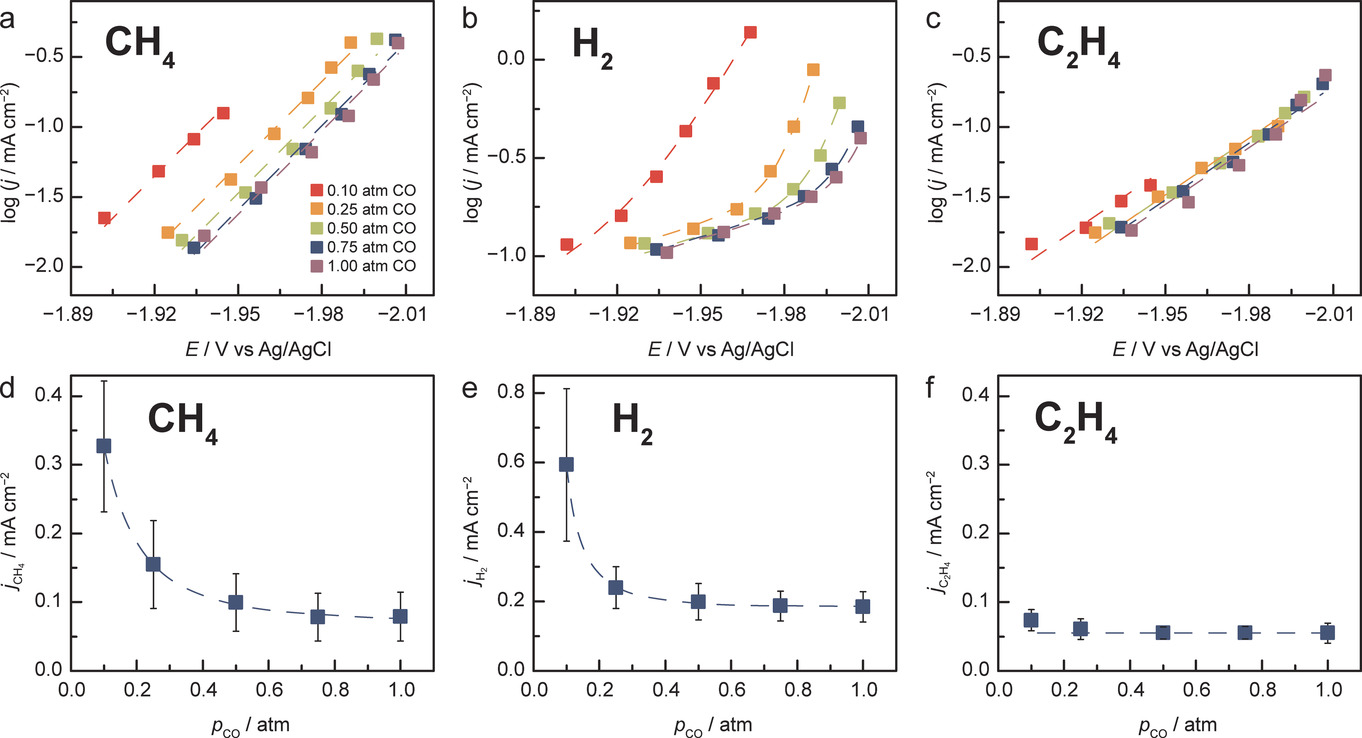Surendranath paper published in Angewandte Chemie
The paper, Competition between H and CO for Active Sites Governs Copper‐Mediated Electrosynthesis of Hydrocarbon Fuels, was authored by Dr. Marcel Schreier, Dr. Youngmin Yoon, Megan N. Jackson, and Professor Yogesh Surendranath.
A paper authored by Dr. Marcel Schreier, Dr. Youngmin Yoon, Megan N. Jackson, and Professor Yogesh Surendranath was first published in Angewandte Chemie on June 19, 2018. It was featured in the publication’s August 6, 2018 issue.
Competition between H and CO for Active Sites Governs Copper‐Mediated Electrosynthesis of Hydrocarbon Fuels
Dr. Marcel Schreier, Dr. Youngmin Yoon, Megan N. Jackson, and Professor Yogesh Surendranath
Angewandte Chemie, Vol. 57 Issue 32, August 6, 2018, pp 10221-10225
DOI: https://doi.org/10.1002/anie.201806051
Abstract: The dynamics of carbon monoxide on Cu surfaces was investigated during CO reduction, providing insight into the mechanism leading to the formation of hydrogen, methane, and ethylene, the three key products in the electrochemical reduction of CO2. Reaction order experiments were conducted at low temperature in an ethanol medium affording high solubility and surface‐affinity for carbon monoxide. Surprisingly, the methane production rate is suppressed by increasing the pressure of CO, whereas ethylene production remains largely unaffected. The data show that CH4 and H2 production are linked through a common H intermediate and that methane is formed through reactions among adsorbed H and CO, which are in direct competition with each other for surface sites. The data exclude the participation of solution species in rate‐limiting steps, highlighting the importance of increasing surface recombination rates for efficient fuel synthesis.
Read the Full Text at Wiley Online Library.
Research in the Surendranath Group is focused on addressing global challenges in the areas of chemical catalysis, energy storage and utilization, and environmental stewardship. Fundamental and technological advances in each of these areas require new methods for controlling the selectivity and efficiency of inner-sphere reactions at solid-liquid interfaces. Their strategy emphasizes the bottom-up, molecular-level, engineering of functional inorganic interfaces with a current focus on electrochemical energy conversion.





